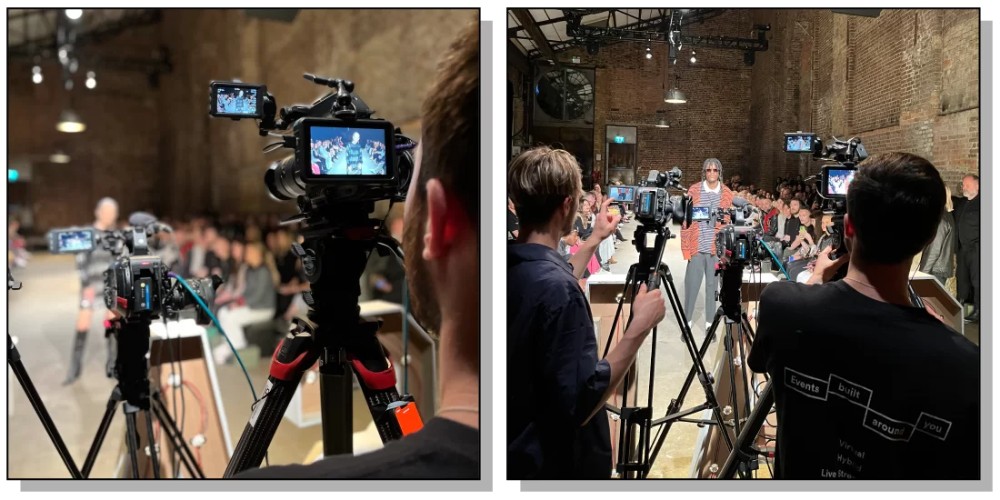Cinematic Techniques in Event Videography
Event videography goes beyond simple documentation; it captures moments, emotions, and narratives in a visually compelling and cinematic manner. Whether it’s a wedding, corporate event, concert, or festival, employing cinematic techniques elevates the quality of the video, making it more engaging and memorable for viewers. In this article, we delve into the art of event videography, exploring key cinematic techniques, their impact, and how they enhance the storytelling aspect of capturing events.

Understanding Event Videography
Event videography involves capturing live events through video recording techniques that aim to convey the atmosphere, emotions, and essence of the occasion. Unlike traditional documentation, which focuses on recording events as they unfold, event videographers employ cinematic techniques to create visually stunning narratives that resonate with viewers.
Key Cinematic Techniques in Event Videography
- Composition and Framing:
- Rule of Thirds: Divide the frame into thirds both horizontally and vertically, placing key elements along these lines or at their intersections to create balance and visual interest.
- Leading Lines: Use natural or architectural lines within the scene to lead the viewer’s eye towards the main subject or focal point.
- Symmetry and Patterns: Utilize symmetrical compositions or patterns to create harmony and aesthetic appeal in the frame.
- Depth of Field:
- Shallow Depth of Field: Blur the background to emphasize the main subject, creating a cinematic look that draws attention to specific details or emotions.
- Deep Depth of Field: Keep everything in focus to capture the entire scene with clarity, providing context and a sense of environment.
- Lighting:
- Natural Light: Utilize natural lighting sources such as sunlight or ambient light to create a soft, natural look that enhances mood and atmosphere.
- Artificial Lighting: Use artificial lighting techniques like spotlights, diffusers, or gels to add drama, highlight subjects, or create specific lighting effects.
- Camera Movement:
- Tracking Shots: Move the camera smoothly along a predefined path to follow action or reveal new perspectives, adding dynamism and flow to the video.
- Pan and Tilt: Rotate the camera horizontally (pan) or vertically (tilt) to survey the scene or focus on different elements within the frame.
- Steadicam or Gimbal: Use stabilizing equipment to achieve smooth and steady camera movements, enhancing production value and viewer immersion.
- Editing and Post-Production:
- Montage and Sequence: Arrange footage in a sequence that builds narrative and emotional momentum, using transitions and overlays to create a cohesive story.
- Color Grading: Adjust colors, contrast, and saturation to achieve a specific mood or visual style, enhancing the overall cinematic feel of the video.
- Sound Design: Incorporate background music, ambient sounds, and synchronized audio to complement visuals and evoke emotions, ensuring a cinematic viewing experience.
Impact of Cinematic Techniques in Event Videography
By applying cinematic techniques, event videographers can:
- Enhance Emotional Impact: Capture genuine emotions and moments with depth and authenticity, creating a more immersive and emotionally resonant experience for viewers.
- Tell Compelling Stories: Transform mundane events into captivating narratives by framing shots creatively, using lighting effectively, and employing dynamic camera movements.
- Increase Production Value: Elevate the overall quality of the video production, making it visually appealing and engaging for audiences accustomed to cinematic standards.
- Differentiate Content: Stand out in a competitive market by offering high-quality, cinematic event videos that leave a lasting impression on clients and viewers alike.
Evolving Trends in Event Videography
As technology and creative trends evolve, event videography continues to innovate:
- Drone Footage: Incorporation of aerial shots and drone videography to capture unique perspectives and expansive views of events.
- Virtual Reality (VR) and 360-Degree Video: Integration of immersive technologies to provide interactive and virtual experiences of events, enhancing viewer engagement.
- Live Streaming and Real-Time Editing: Use of live streaming platforms and real-time editing software to deliver instant event coverage and highlights to global audiences.
Conclusion
Cinematic techniques are essential tools for event videographers seeking to create compelling, visually stunning videos that capture the essence and emotions of live events. By mastering composition, lighting, camera movement, and post-production skills, videographers can elevate their storytelling capabilities and deliver impactful content that resonates with viewers. As event videography continues to evolve with technological advancements and creative innovations, embracing cinematic techniques ensures that videos not only document events but also immerse audiences in memorable and cinematic experiences.